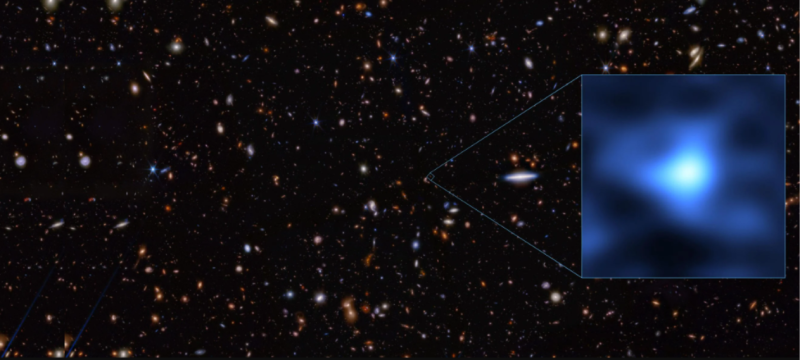Astronomers have detected oxygen in the most distant known galaxy, JADES-GS-z14-0, which existed just 300 million years after the Big Bang. The discovery, made using the ALMA telescope, suggests that galaxies formed and evolved much faster than previously believed.
Also Read: Scientists develop oxygen particle injection allowing survival without breathing
JADES-GS-z14-0, discovered in 2024, is the farthest confirmed galaxy ever observed, with its light taking 13.4 billion years to reach Earth. Scientists were surprised to find significant oxygen levels in the galaxy, as the early universe was expected to lack heavy elements. This indicates rapid star formation and chemical enrichment at an unprecedented pace.
The finding, confirmed by two independent research teams, provides a precise distance measurement and challenges conventional models of galaxy evolution. Researchers emphasize the combined power of the ALMA telescope and the James Webb Space Telescope (JWST) in uncovering new insights into the universe’s infancy.
Experts believe this discovery could reshape our understanding of early cosmic history and the formation of elements in the first galaxies.









